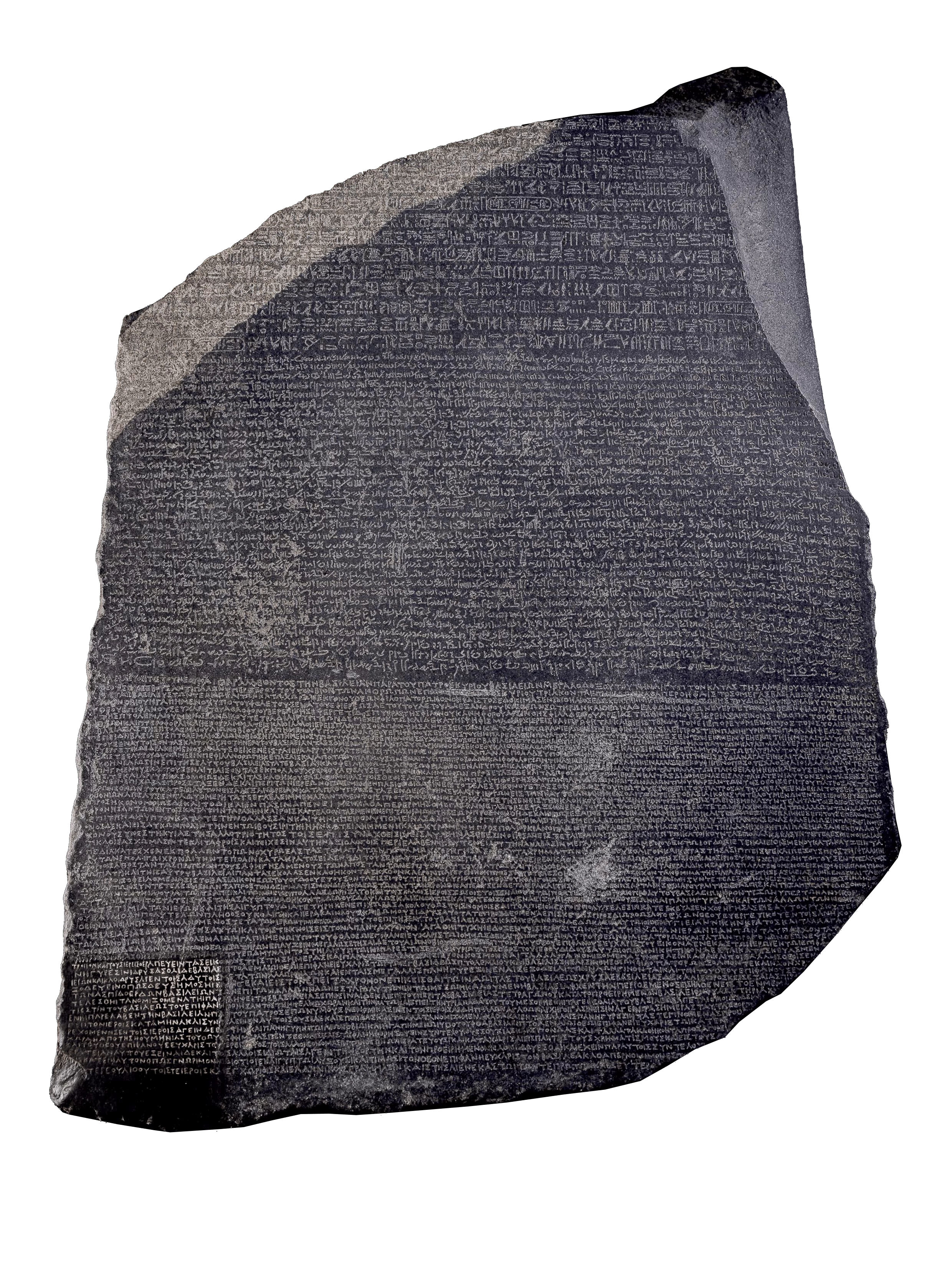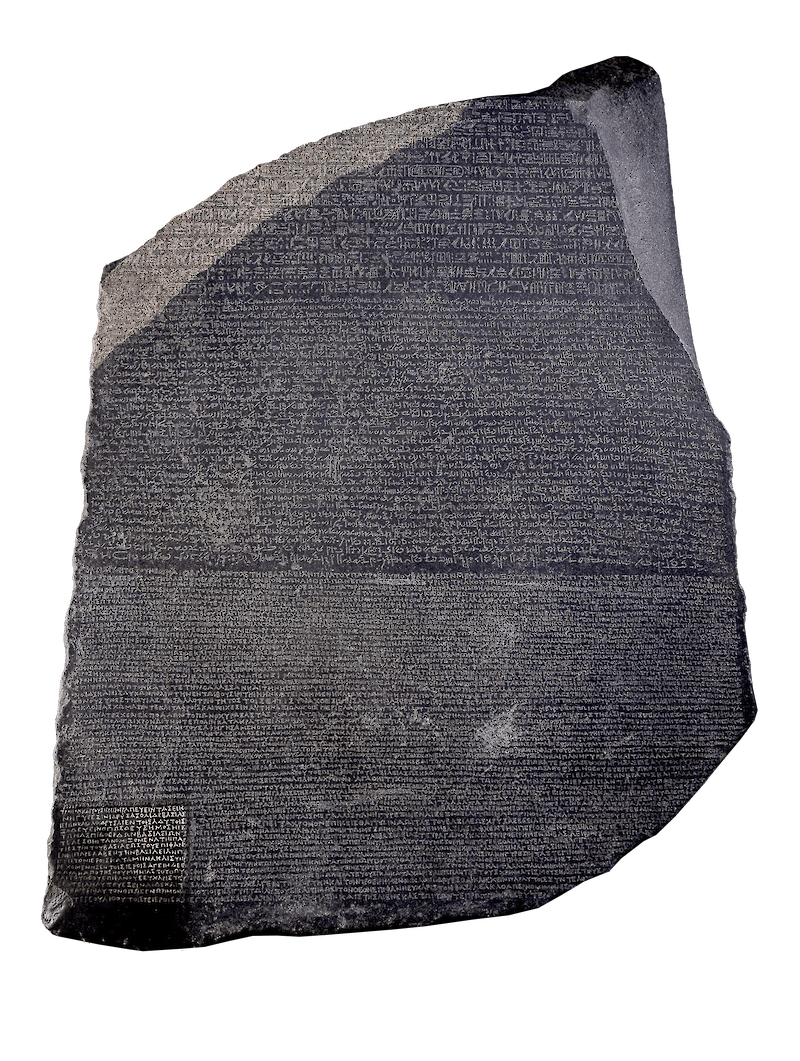


Ancient Egypt’s written language, hieroglyphs, had been considered un-translatable in the modern era, largely because there were no bi-lingual documents that could act as a key. In July 1799, Pierre-François Bouchard, a soldier in Napoleon’s army, discovered the stone in the town of Rashid (Rosetta) in the Nile Delta during an expedition to Egypt. The so-called ‘Rosetta Stone’ was inscribed with one text, in three languages: Ancient Egyptian hieroglyphs, Demotic script, and Greek script, making it the first artifact discovered that could enable hieroglyphic translation. When British troops took Egypt from the French army, the stone changed hands and was shipped back to England where it was displayed in the British Museum in 1802.
A year later, the Greek portion of the stone was translated, but it took another 20 years before French scholar Jean-François Champollion was able to confidently decipher the hieroglyphic portion of the stone. Scholars took decades more to fully decipher and understand the ancient Egyptian language, but the Rosetta Stone was the linchpin in our understanding of this super power of the ancient world.
